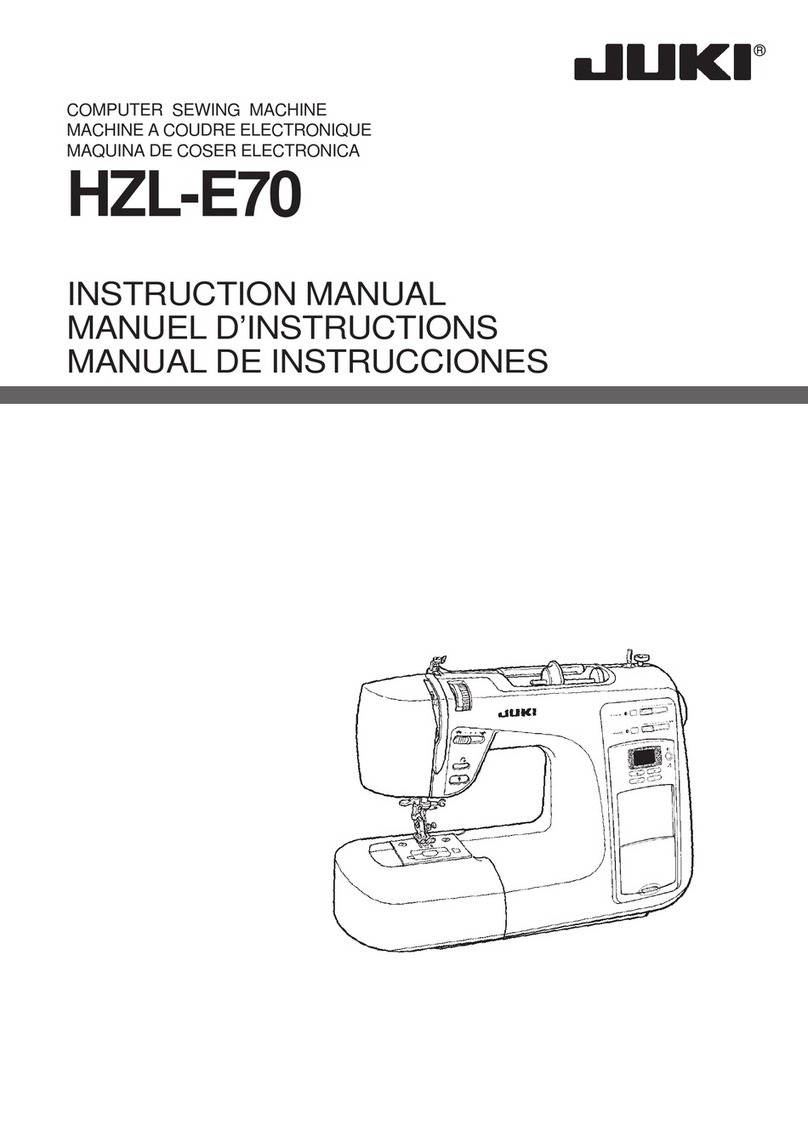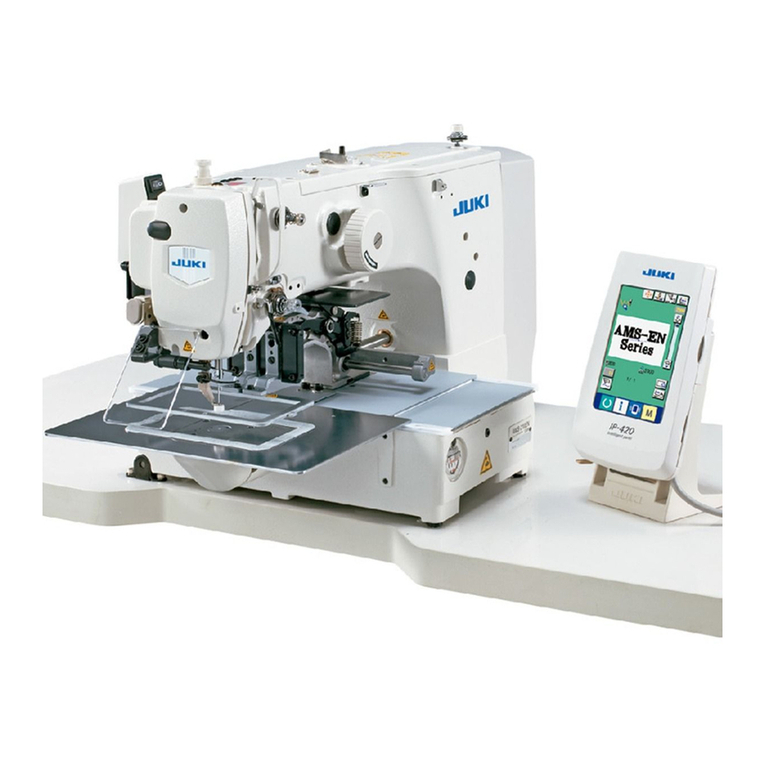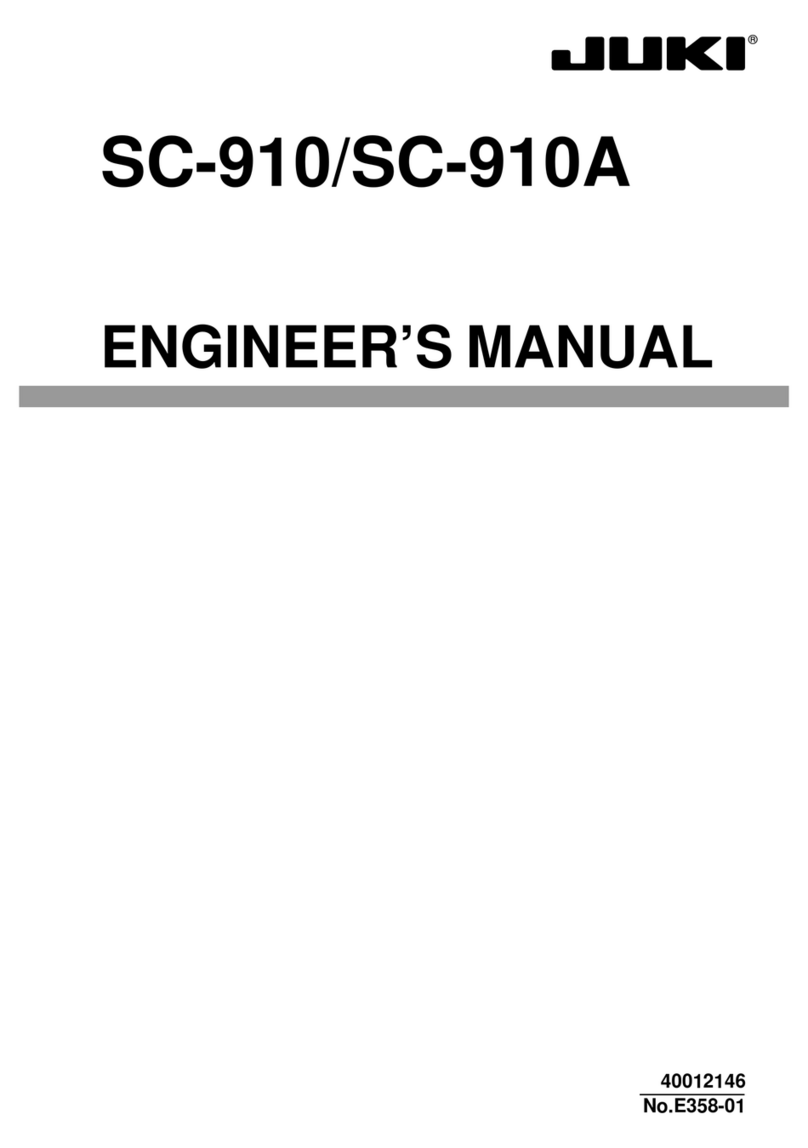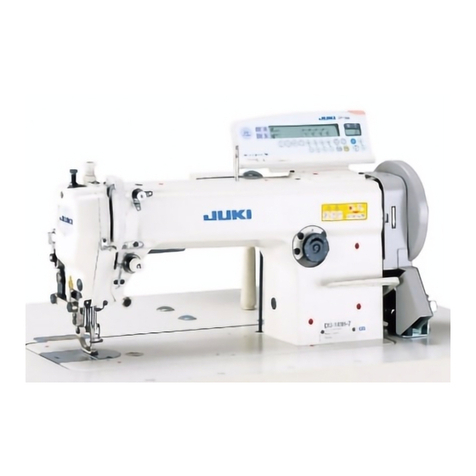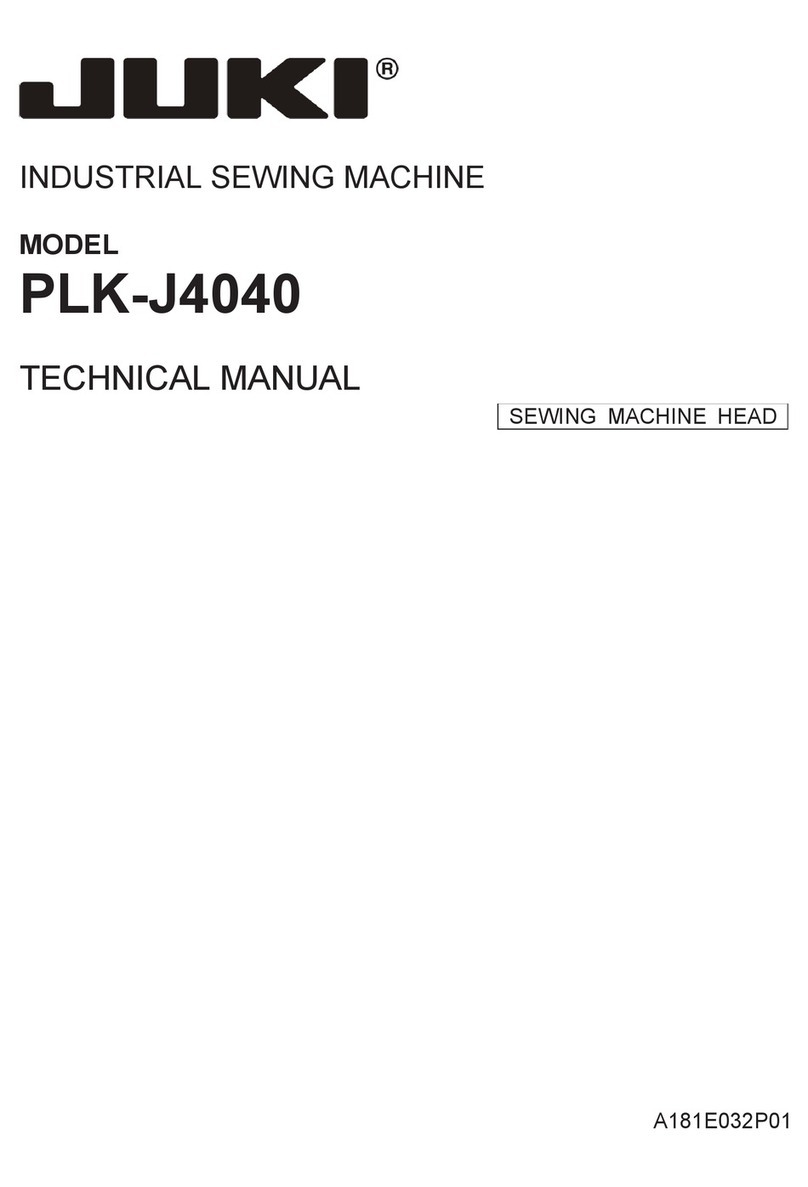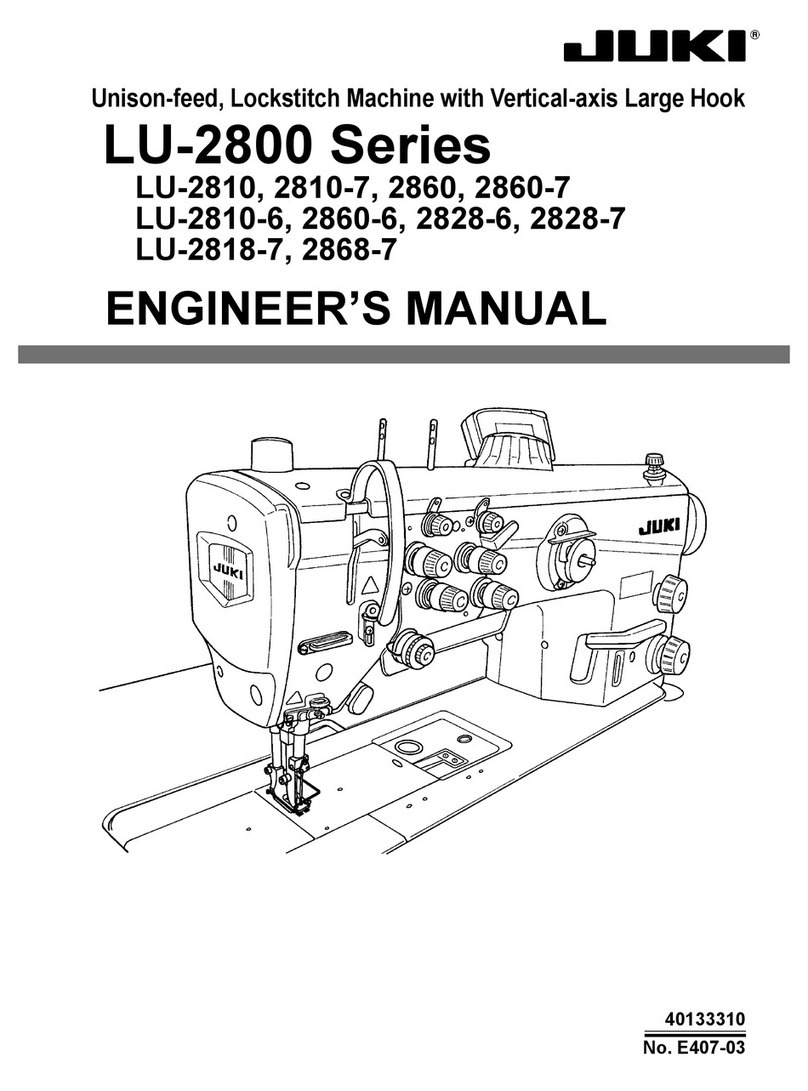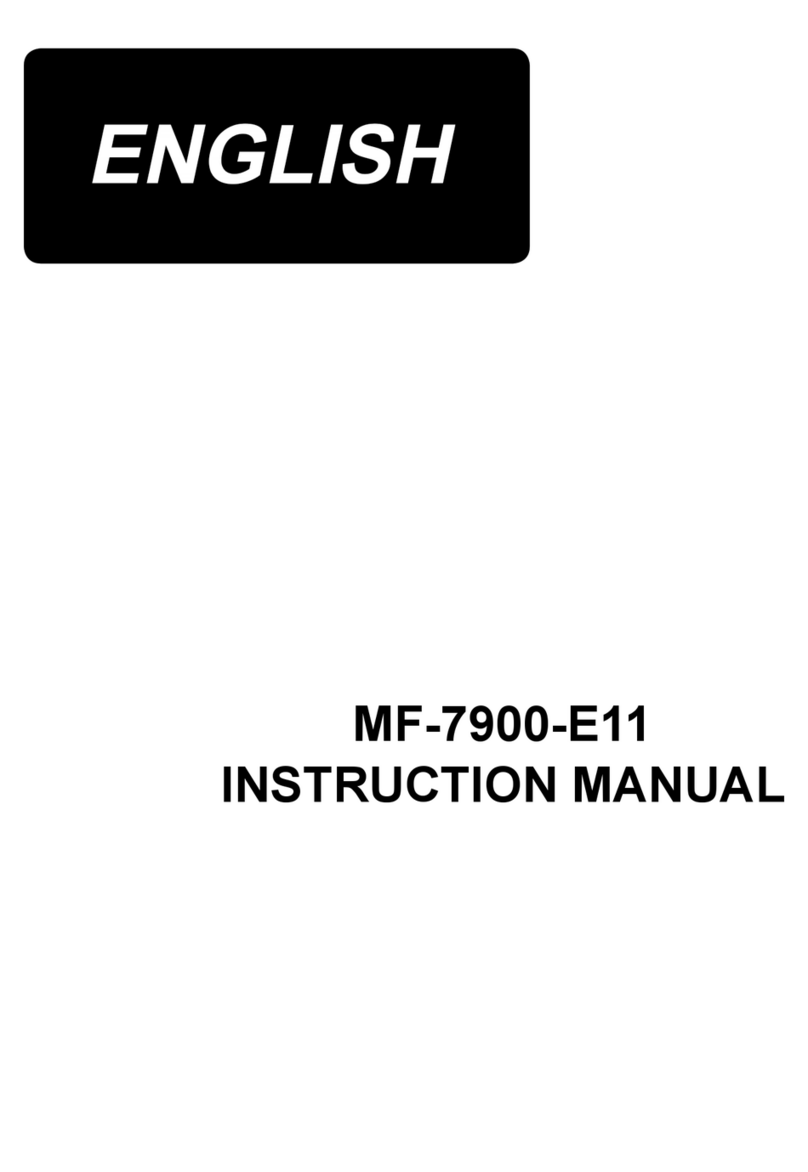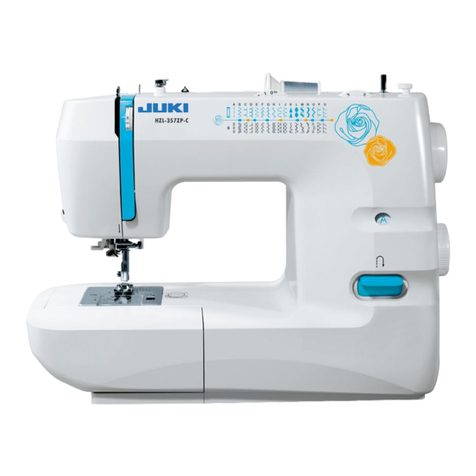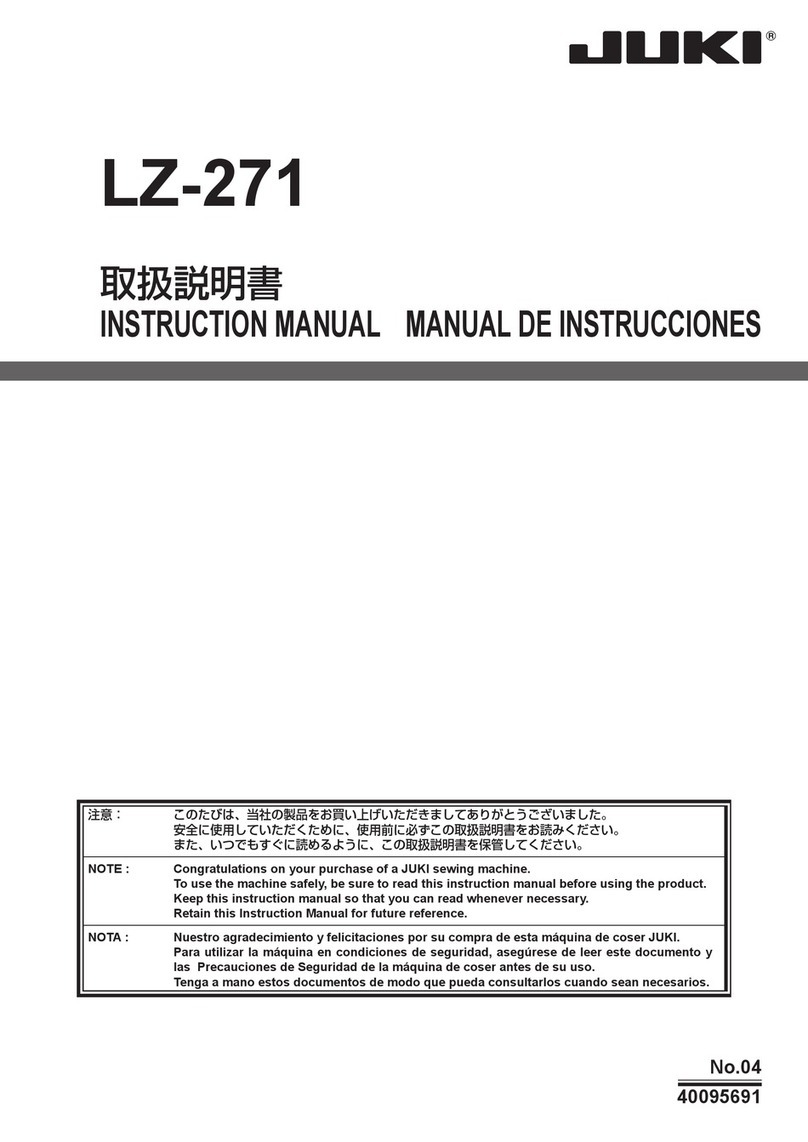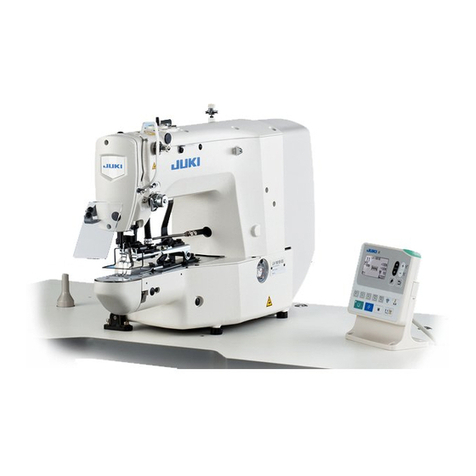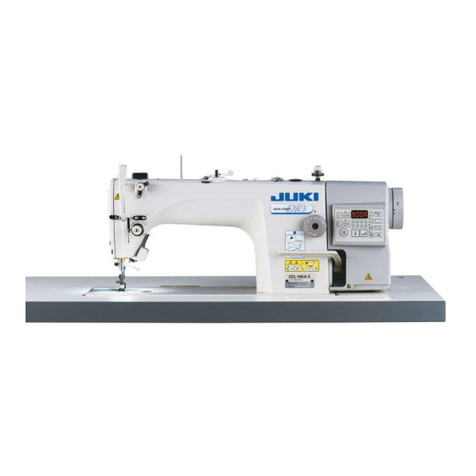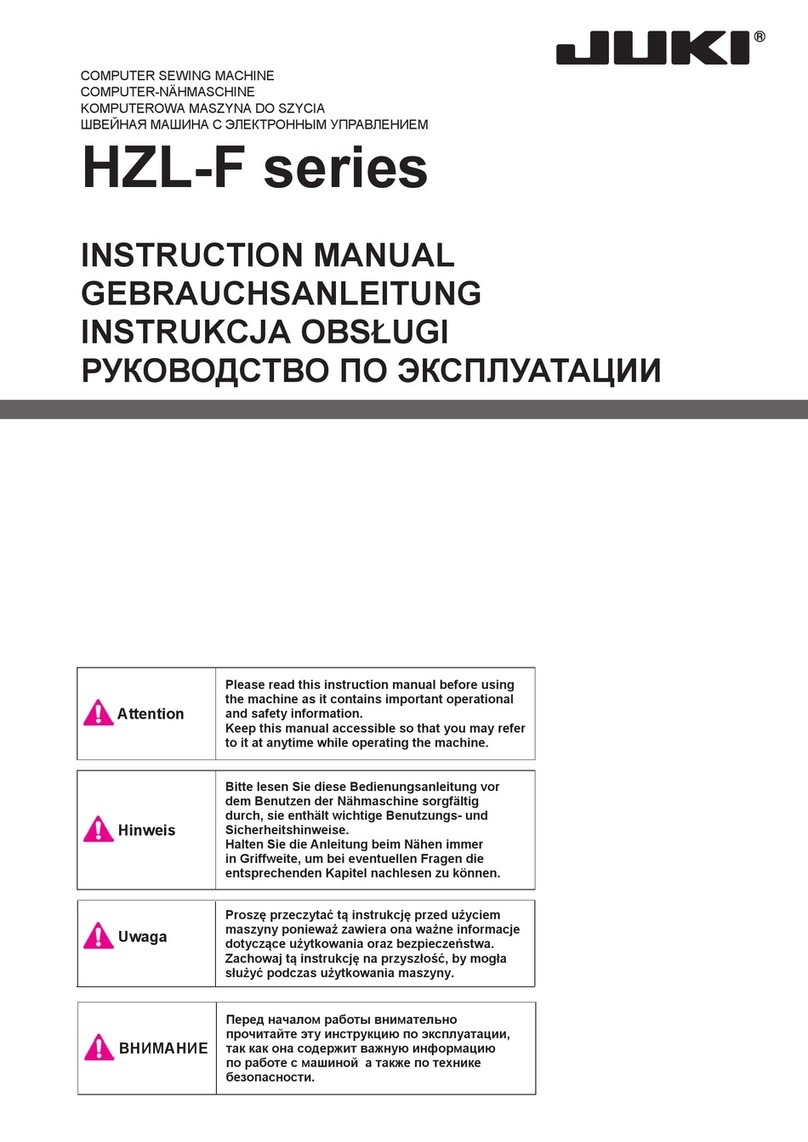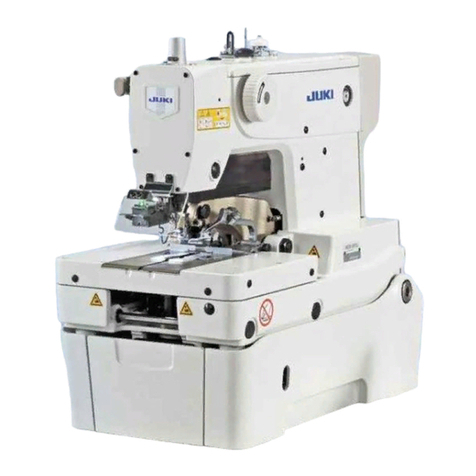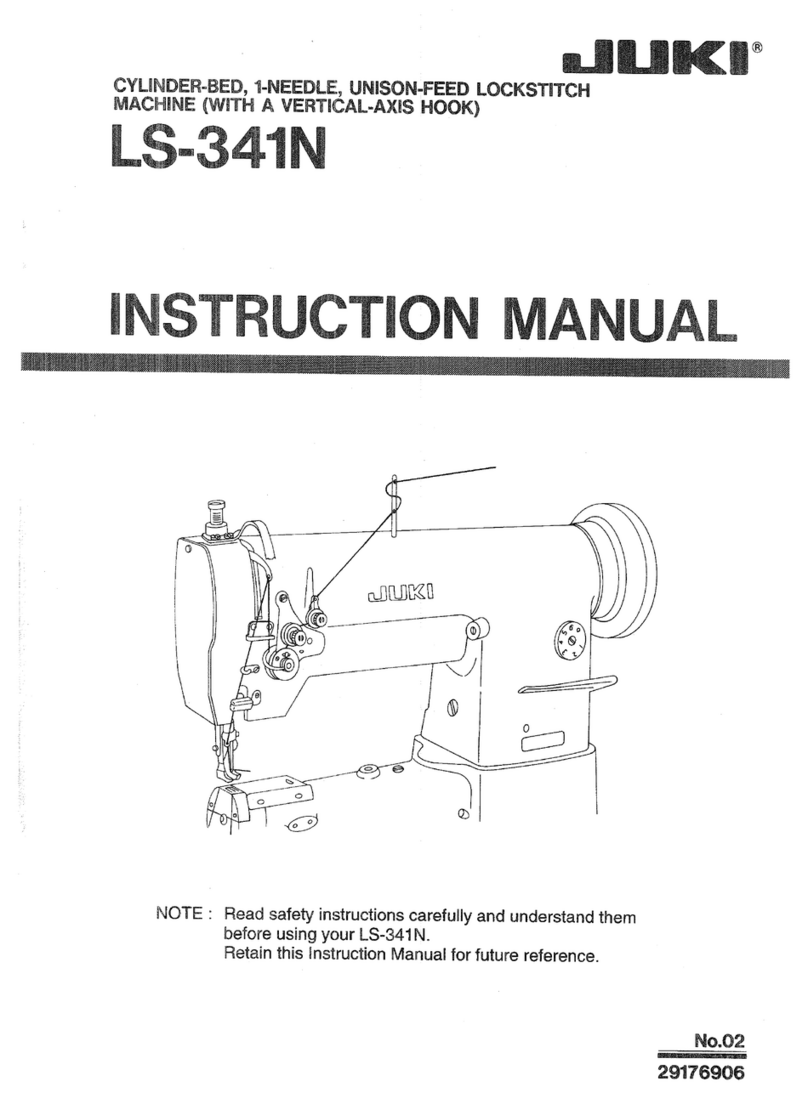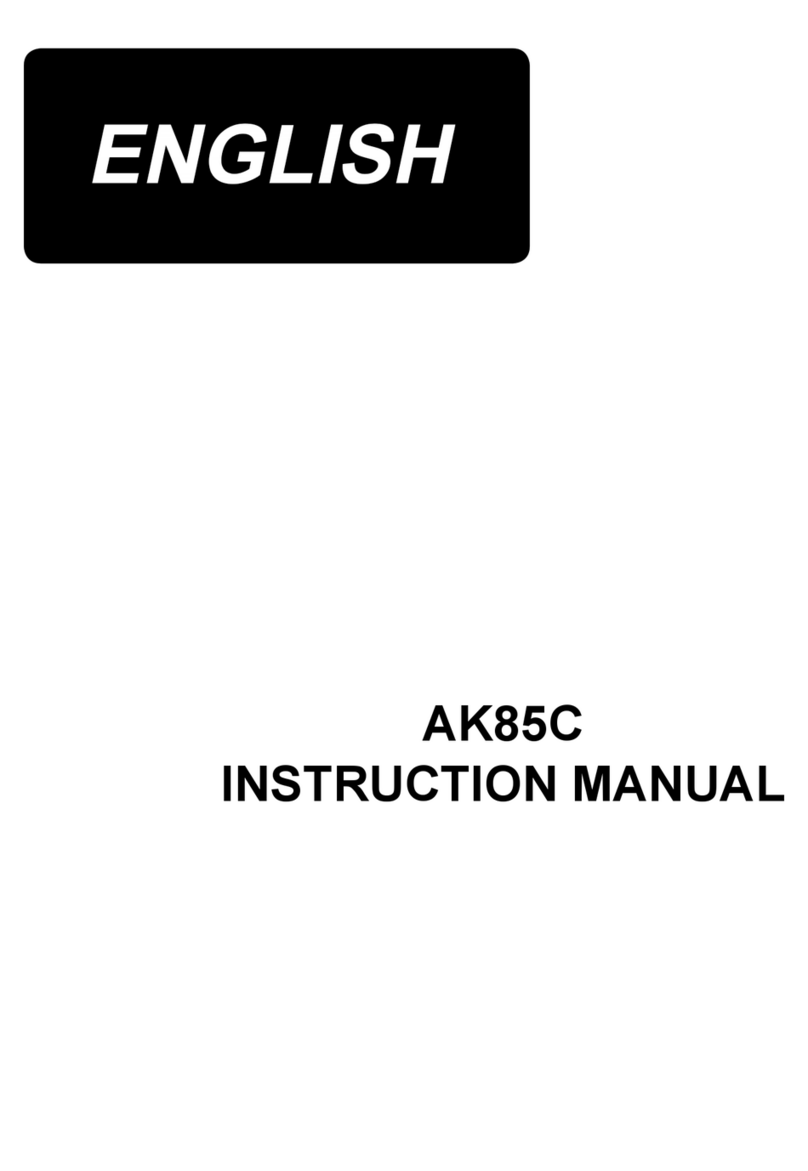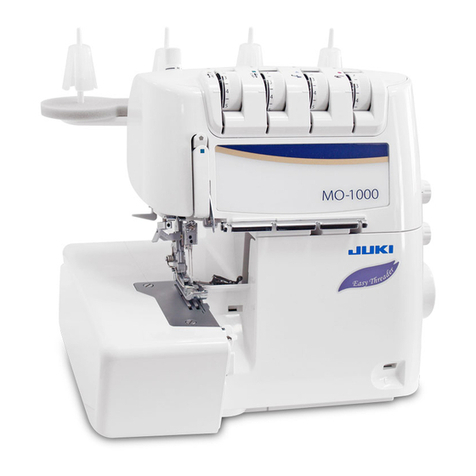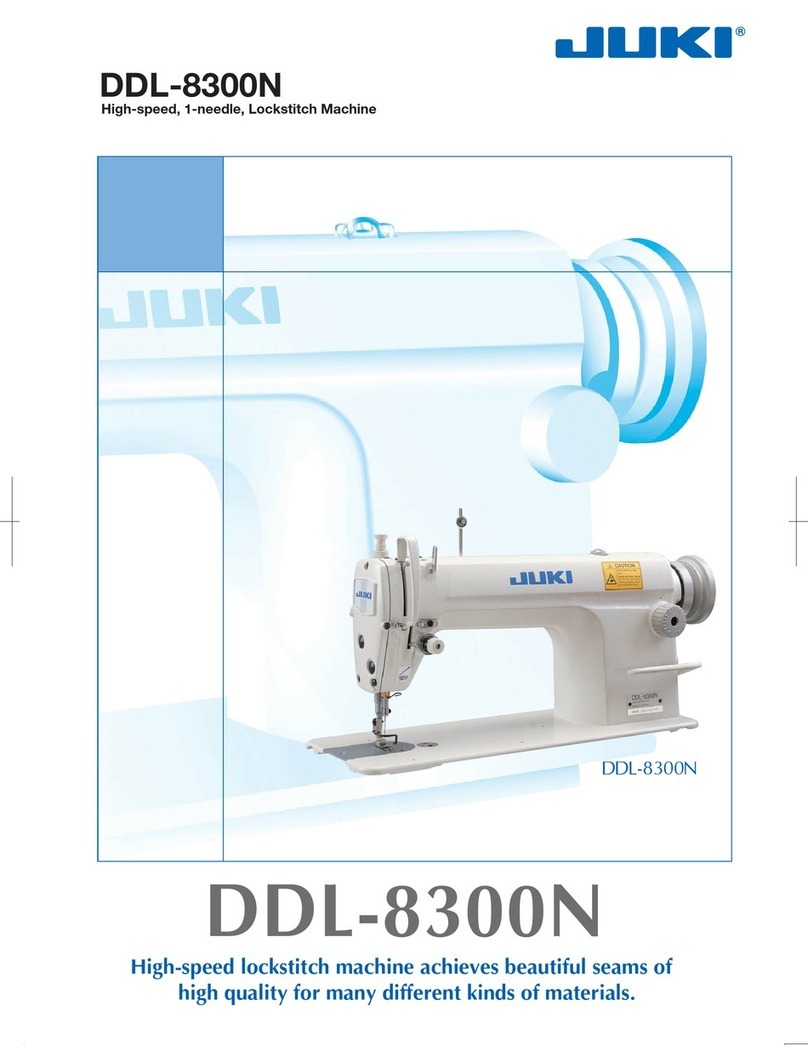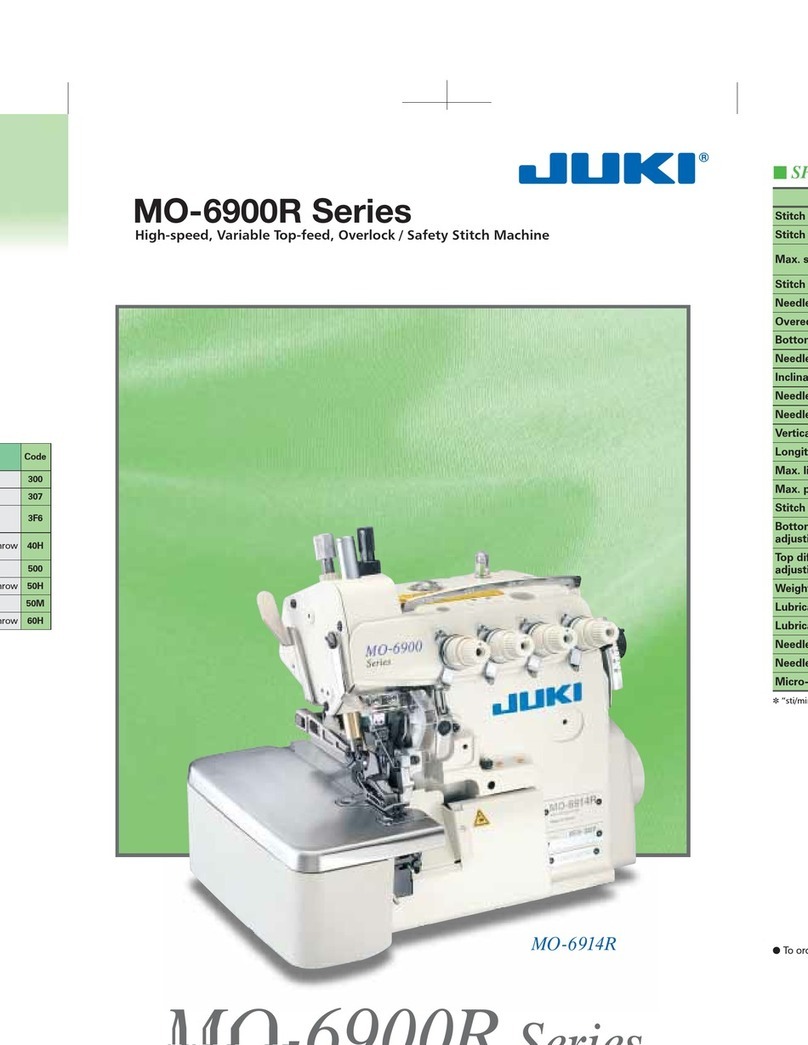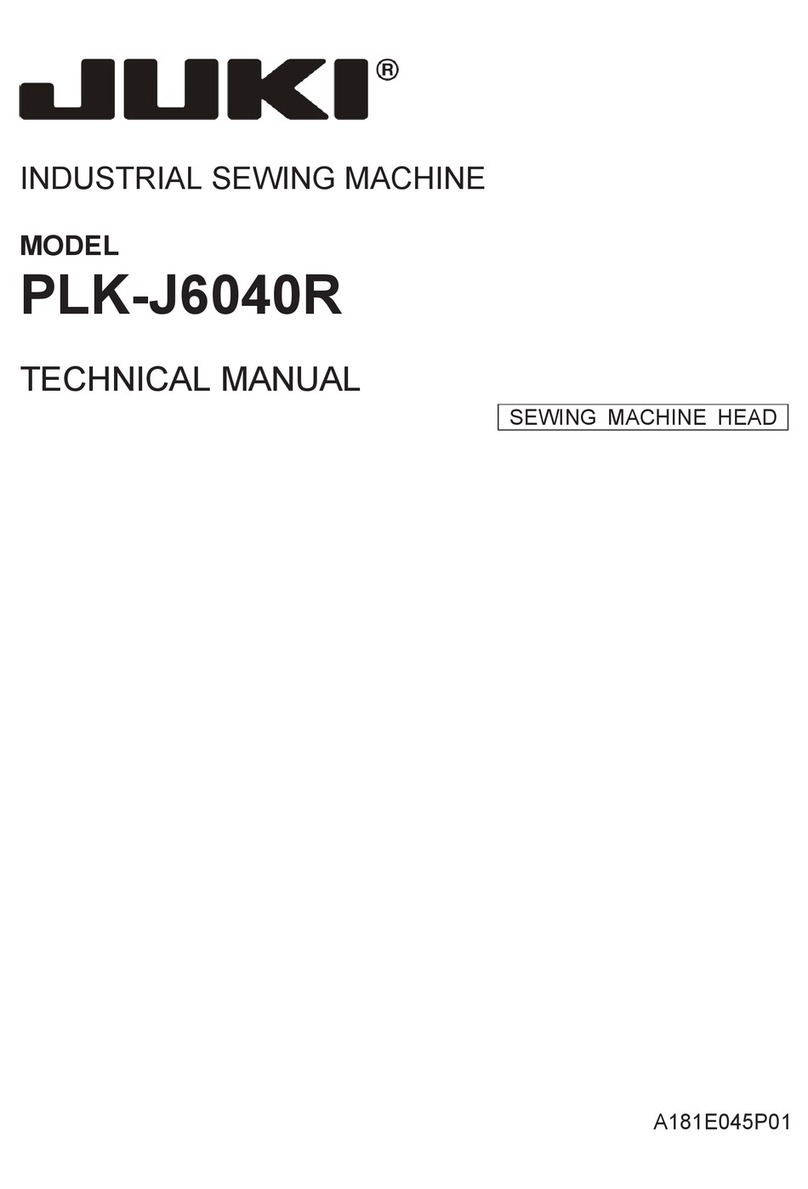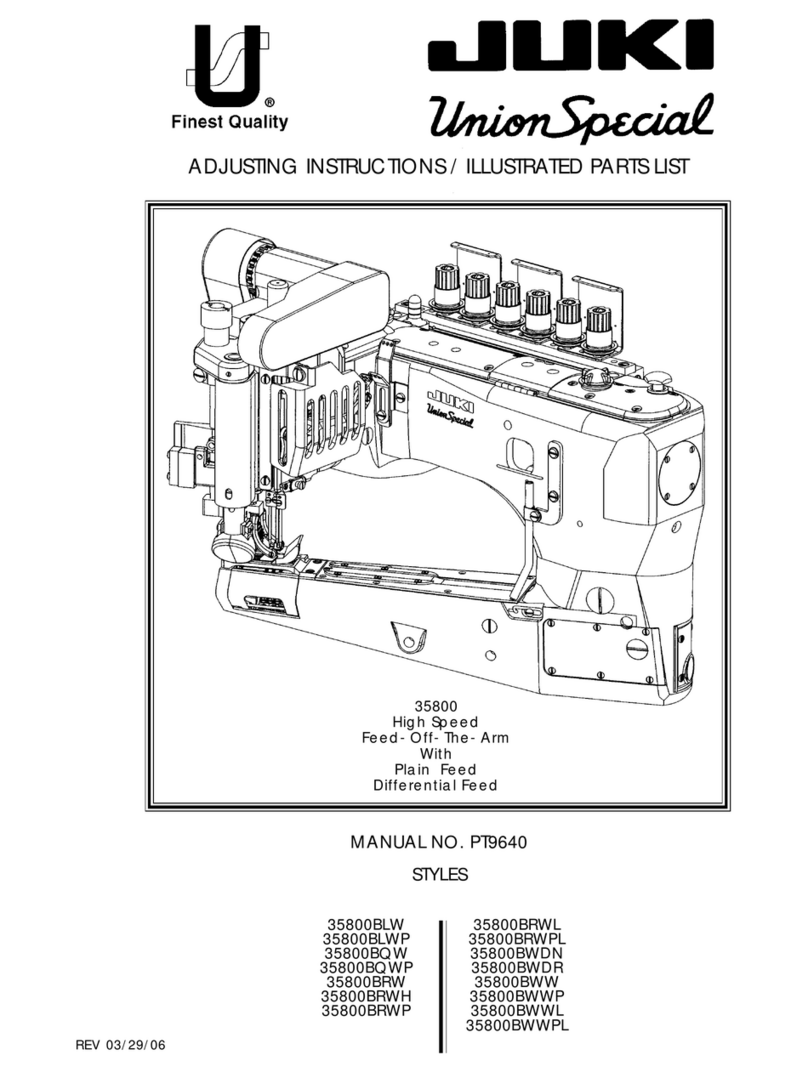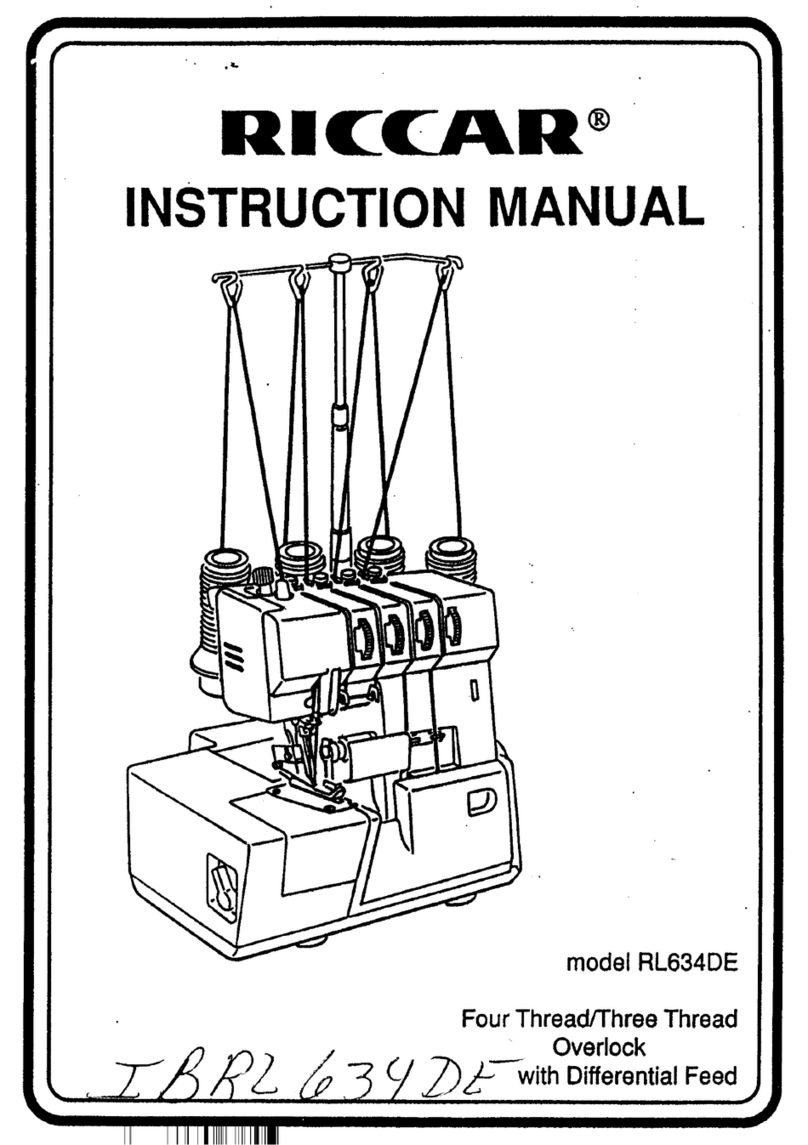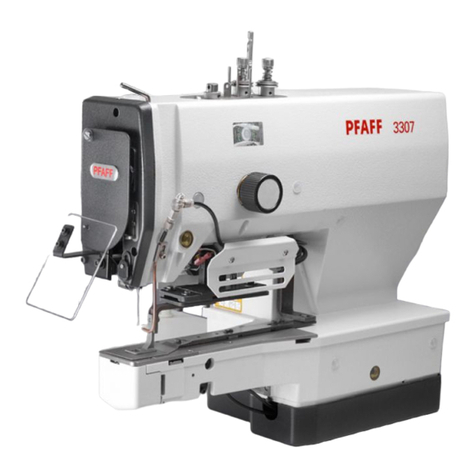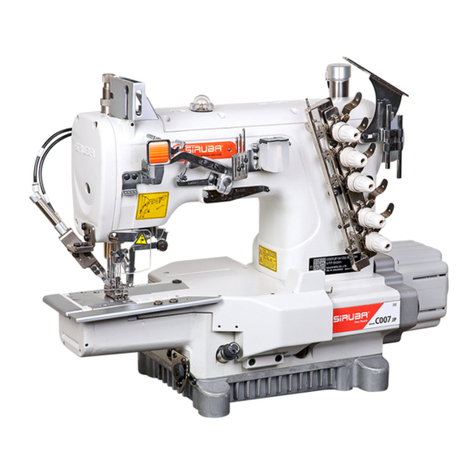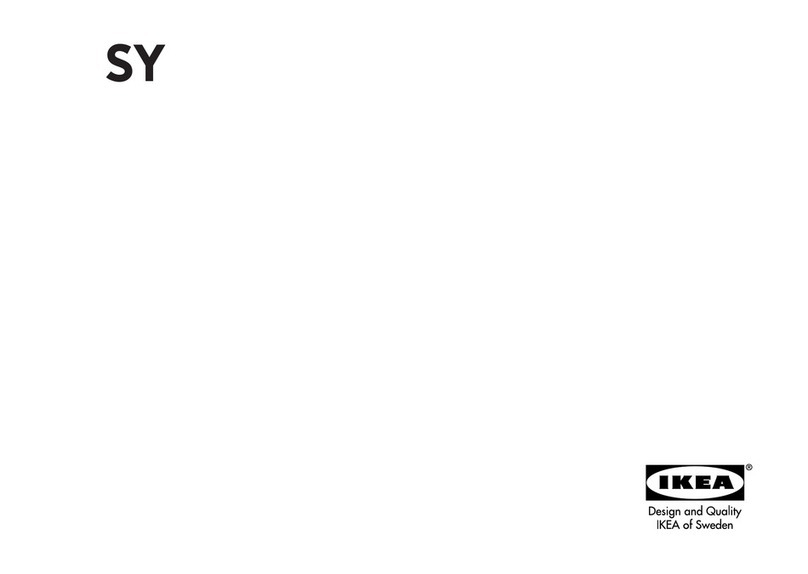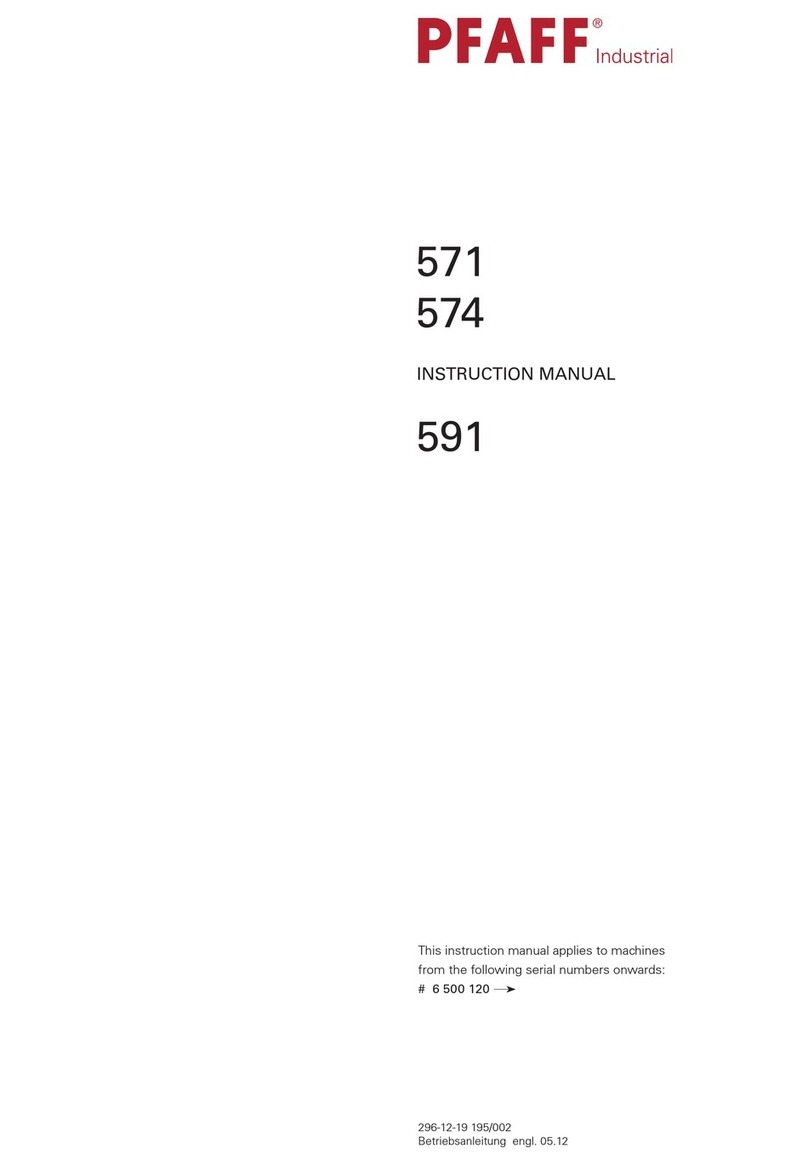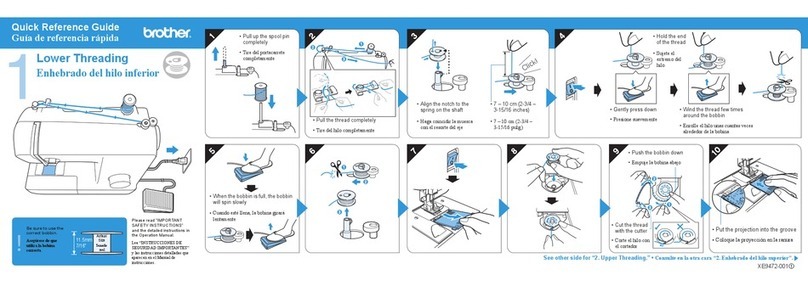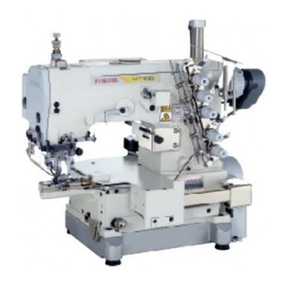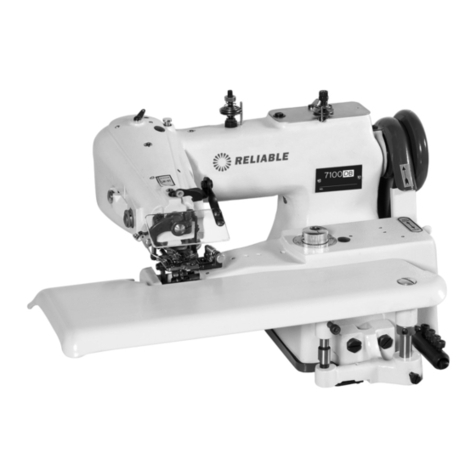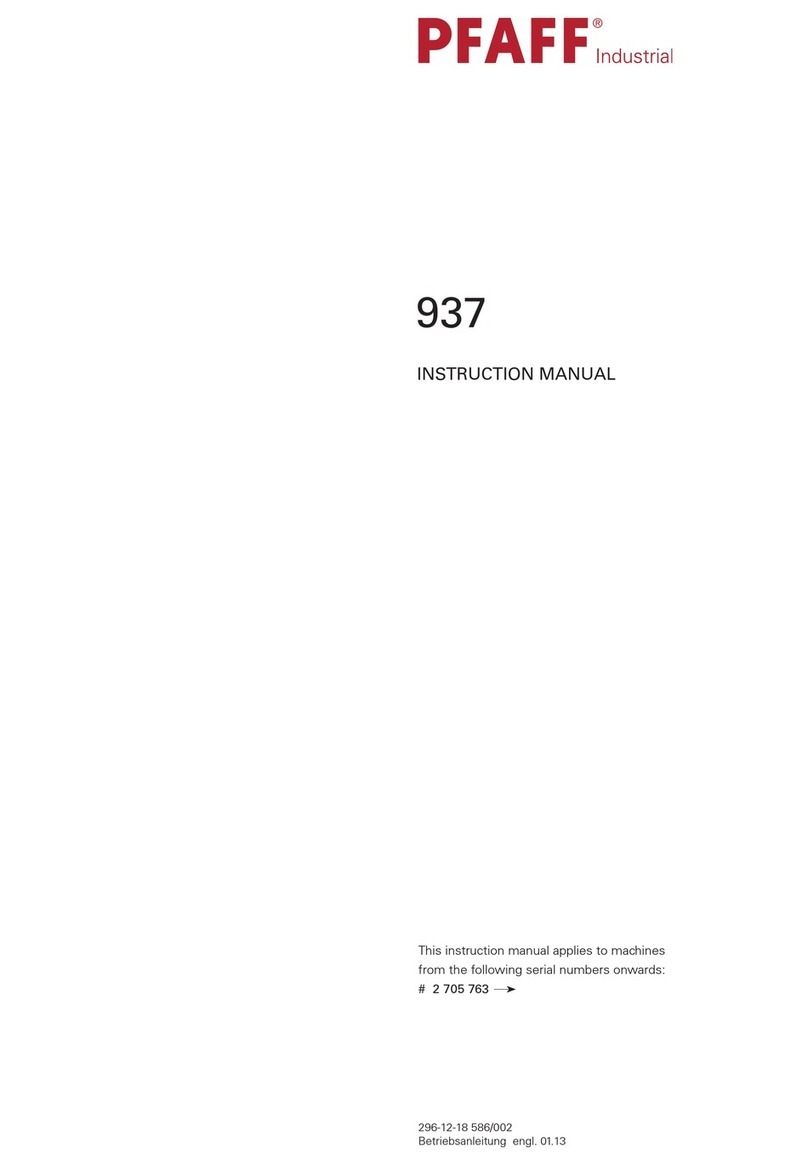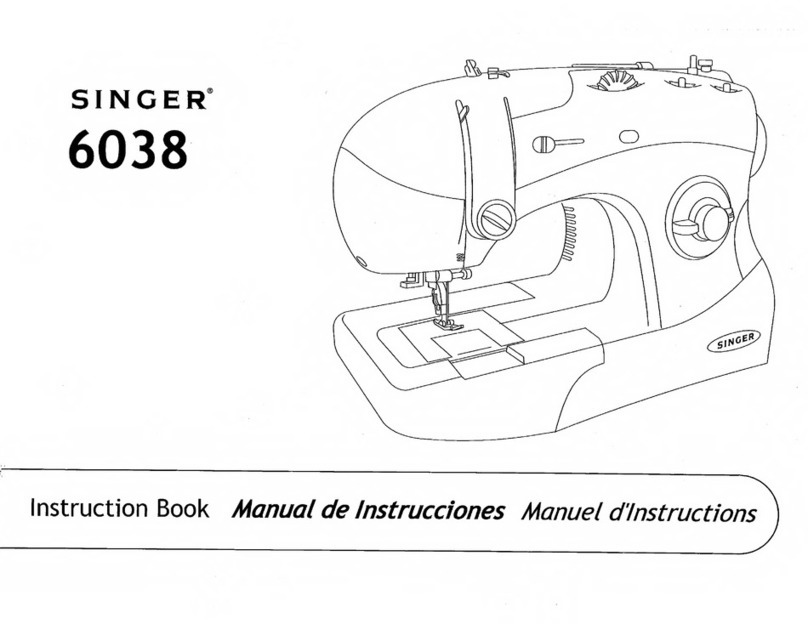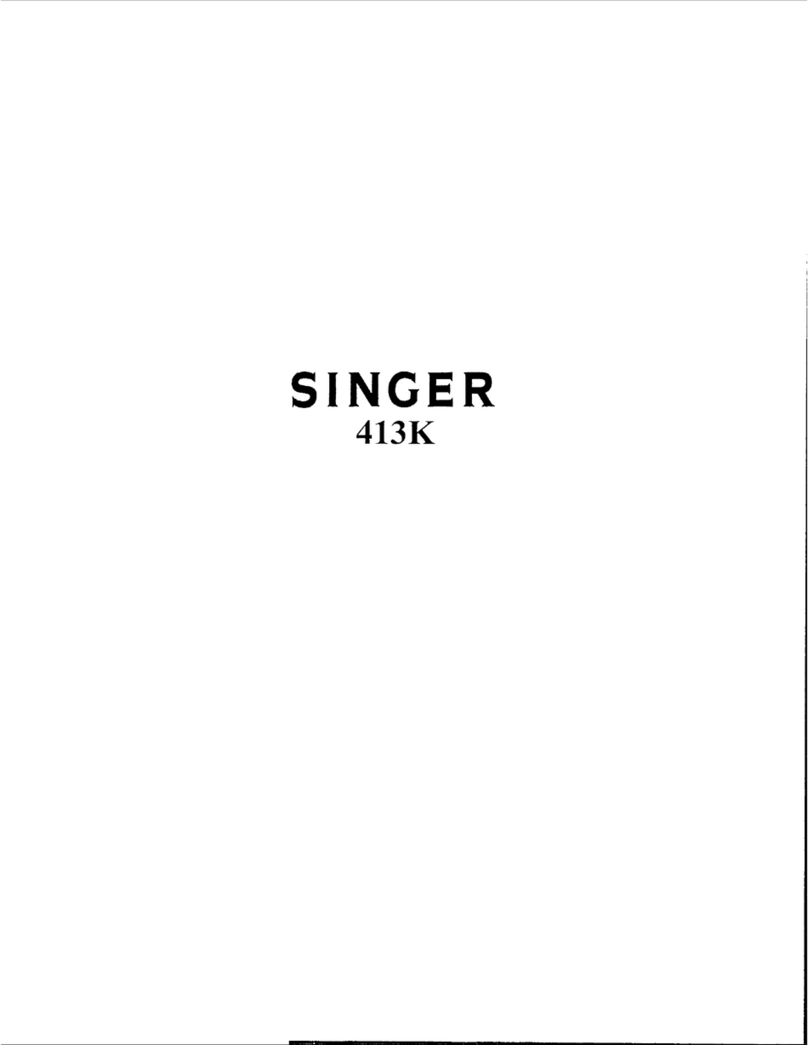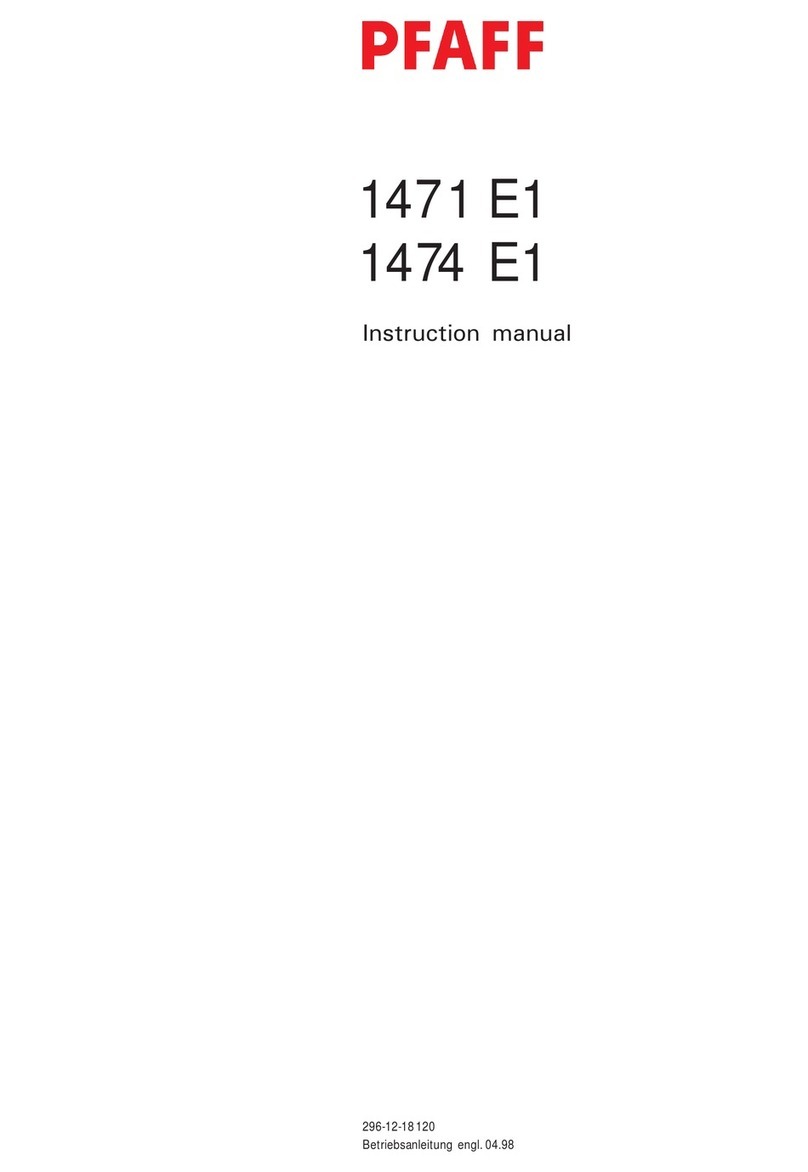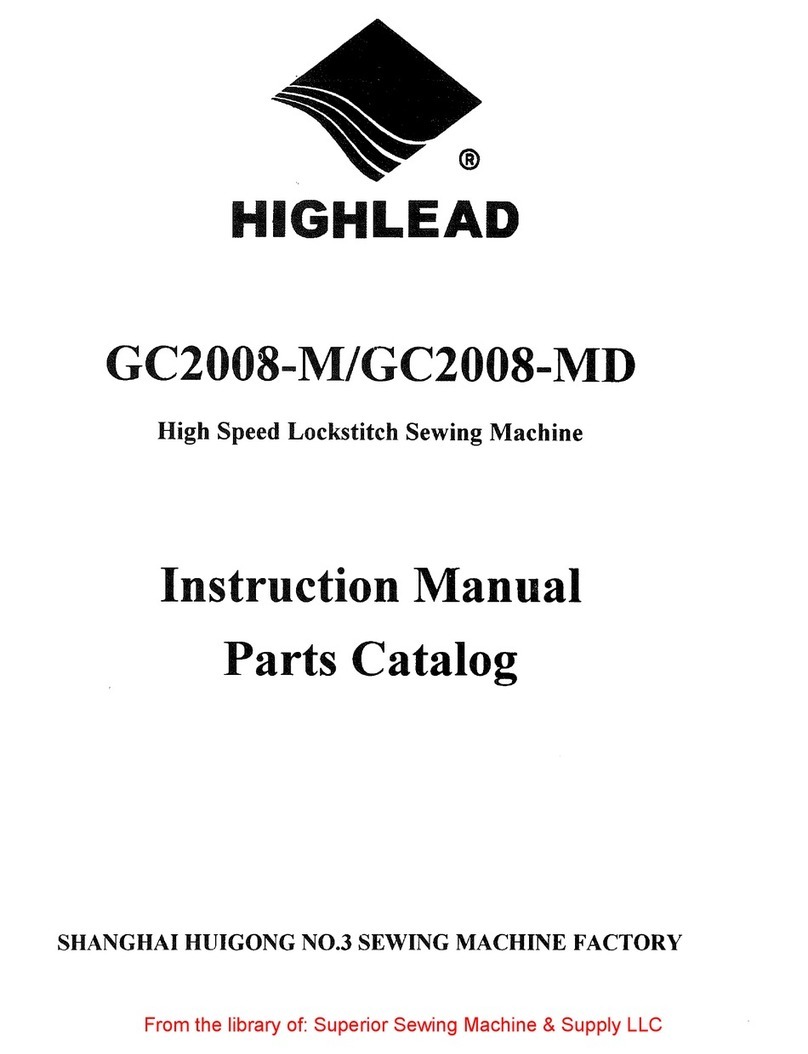
6.
ADJUSTING THE VERTICAL STROKE OF THE TOP FEED
DOG
I
--
-
-
--
-
-
7
To change the vertical stroke of the top feed dog, move the side
cover back, loosen setscrew
@
of topfeed adjustor
@
attached
to knife driving arm shaft
0
.
and move adjustor
@
up to
increase the vertical stroke or down to decrease it. Be sure to
securely tighten setscrews
@
.
Adjust the position of felt
@
so that it is in slight contact with
link (A)
@
.
At this time, be careful not to allow felt
0
to
come into contact with other adjacent parts.
*
For MOJ-2500N models
Adjust the vertical stroke of the top feed dog within the range
in
which red marker line
@
engraved on knife drivingarm shaft
0
stays between two red marker lines
@
on top feed adjustor
@
.
When red marker line
@
is set to lower red marker line
@
,
the
maximum vertical stroke of
6.5
mm is provided.
When red marker Line
@
is set to upper red marker line
@
,
the
minimum vertical stroke of
4.5
mm is given.
(Caution) Never set red marker line
0
beyond the lower red
marker line engraved on the top feed adjust (Be sure
that the set vertical stroke does not exceed
6.5
mm).
*
For MOK-25001Umodels
Adjust the vertical stroke of the top feed dog within the range
in
which red marker line
0
engraved on knife drivingarmshaft
0
stays between two white marker lines
@
engraved on top feed
adjustor
@
.
When red marker line
0
is set to lower white marker line
@
,
the maximum vertical stroke of
6.5
mm is given, and when it is
set to upper white marker line
@
,
the minimum vertical stroke
of
5
mm is given.
1
7.
ADJUSTING THE TOP DIFFERENTIAL FEED RATIO
I
1
/e/
Top feed dog
Presser
foot
The top feed amount can be altered without changing the bottom
feed amount, by top-feed adjusting lever
.
1.
Turn lock nut
@
in the direction of arrow. Move top-feed
adjusting lever
0
to work the top differential feed mecha-
nism.
2.
When the lever is set to
"S",
the top feed amount will be
reduced. The top feed amount will increase as the adjusting
lever is set to a larger number on the scale.
3.
After adjustment, turn lock nut
@
in the opposite direction
from the arrow to lock top-feed adjusting lever
0
.
*
For MOJ-2500Nmodels
The Standard MOJ-2500N machine head is usuallv factorv-
adjusted to a
1
:2.8 (MOJ-2514N),
1:
1.8
(MOJ-2516~)(main
feed dog: top feed dog) top differential feed ratio. If other top
differential
feed
ratios are necessary, adjust as follows:
1.
Cut the front end of the top feed dog by
3
mm at a maximum
so a clearance of
1
mm or more is produced between the front
end of the top feed dog and the front end
of
the slot in the
presser foot when the top feed dog is in the most advanced
position.
2.
Then, loosen
@
of stopper
0
,and move the stopper down
to adjust clearance
0
as tabulated below:
Clearance
0
Max. top differential feed ratios
MOJ-2514N MOJ-2516N
1
:2.1 1:1.3
1
:2.8
1
:
1.8
Max. 1
:4.8
3.
If
a
top differential feed ratio other than those listed above is
required, perform the following adjustment:
Remove the cover from the adjusting hole in the rear of the
machine frame, loosen locknut
@
to release main feed arm
pin
Q
,
and move the main feed arm pin down. When the pin
is set at the lowest point, the maximum top differential feed
ratio of
1
:6
will be provided. After adjustment, securely
tighten nut
0
.
